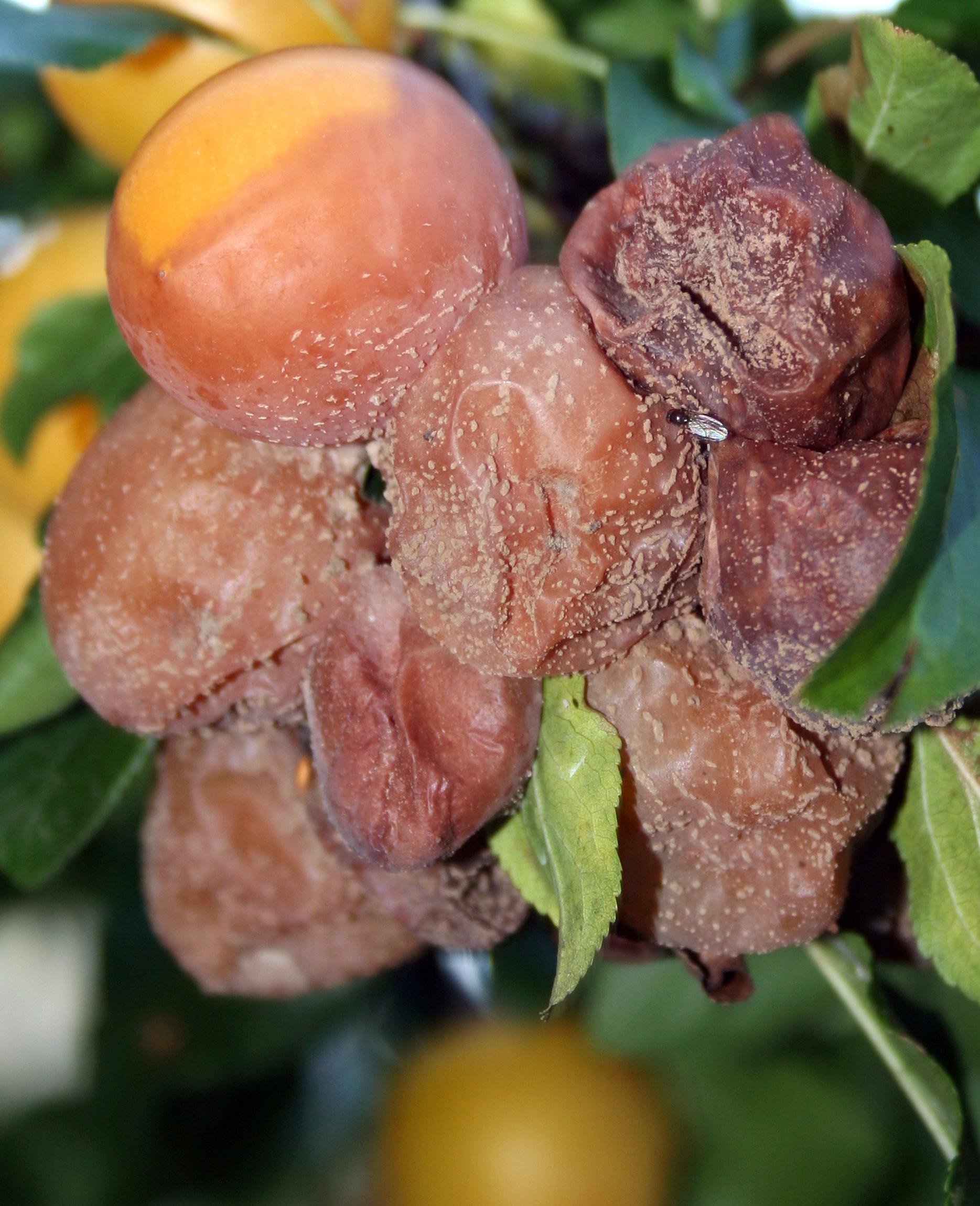
Brown rot
Monilinia spp.
What is Brown rot (monilinia ssp)?
Brown rot, caused by the fungal pathogen Monilinia spp., is a common plant disease that affects a wide range of fruit trees, particularly stone fruits such as peaches, plums, cherries, and apricots worldwide. It is characterized by the development of brown, shrivelled, and rotting fruit with a fuzzy, tan-colored fungal growth on the surface. Brown rot can cause significant yield losses in orchards and can spread rapidly under warm and humid conditions.
How does Brown rot (monilinia ssp) occur?
The disease occurs when the fungal pathogen enters fruit trees through wounds or direct contact with infected material or airborne spores. It thrives in warm and humid conditions. The fungus can infect fruit through wounds, such as insect bites, cracks, or bruises, or by direct contact with infected plant material. Once the fungus enters the fruit, it rapidly spreads, causing the fruit to rot and develop a fuzzy fungal growth. Spores produced by the fungus can be carried by wind, rain, or insects to infect other fruit or nearby trees, leading to further spread of the disease.
Symptoms
1 - Plant Health Impact
Brown rot weakens affected trees, causing defoliation, twig dieback, and potential tree death if untreated.
2 - Soil Contamination
• Infected fruit falling to the ground contaminates the soil, with decaying fruit and spores becoming a potential source of future infections. • Decomposition of infected fruit and plant debris consumes nutrients and organic matter, reducing soil fertility and nutrient availability.
3 - Economic Consequences
Brown rot results in unsellable fruit, reduced crop yields, financial losses for growers, and additional costs for disease management.
Solutions
1 - Cultural Control
• Choose resistant varieties which are less likely to contact the disease and can reduce the risk of an outbreak. • Remove and destroy infected plant parts to break the disease life cycle and prevent it from causing significant harm. • Prune fruit trees to promote good air circulation and sunlight penetration. This will help to reduce humidity and prevent the fungus from spreading. • Harvest fruit when it is fully ripe and remove any infected fruit immediately to prevent the disease from spreading. • Remove any infected plant material from the orchard and dispose of it properly.
3 - Chemical Control
To prevent and control this fungal disease in fruit trees, use fungicides like Captan, Myclobutanil, Thiophanate-methyl, and Propiconazole. Copper fungicides and sulfur powders can be applied weekly, while Tanglefoot® Pruning Sealer is used to seal cuts and wounds. Organocide® Plant Doctor and Bonide® Orchard Spray are eco-friendly options that can be applied as foliar sprays. Consult with a professional to determine the best treatment option for brown rot, follow the instructions provided by the fungicide manufacturer carefully, and spray all parts of the plant thoroughly, especially new shoots.
